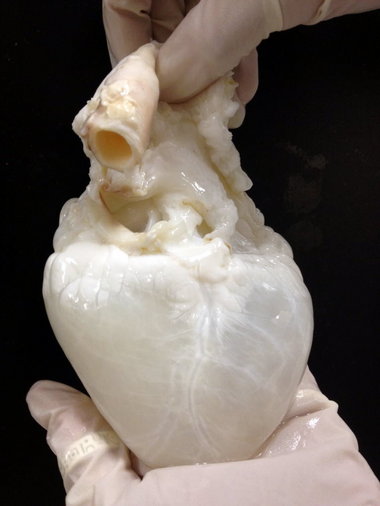This is super cool it will change our medical futures. The growing of body parts is now here and will continue to grow (sic) and save countless lives. Read on people and be educated.
‘Ghost heart ,’ a framework for growing new human hearts, could be answer for thousands waiting for new heart
By Diane Suchetka, The Plain Dealer
August 19, 2012
The problem: More than 3,200 people are on the waiting list for a heart transplant in the United States. Some won’t survive the wait. Last year, 340 died before a new heart was found.
The solution: Take a pig heart, soak it in an ingredient commonly found in shampoo and wash away the cells until you’re left with a protein scaffold that is to a heart what two-by-four framing is to a house.
Then inject that ghost heart, as it’s called, with hundreds of millions of blood or bone-marrow stem cells from a person who needs a heart transplant, place it in a bioreactor — a box with artificial lungs and tubes that pump oxygen and blood into it — and wait as the ghost heart begins to mature into a new, beating human heart.
Doris Taylor, director of regenerative medicine research at the Texas Heart Institute at St. Luke’s Episcopal Hospital in Houston, has been working on this — first using rat hearts, then pig hearts and human hearts — for years.
She has grown rat and pig hearts, but not human hearts — yet.
That’s her goal.

It’s most likely years off, but it’s a pretty sure bet it will happen.
Researchers believe the human hearts, just like the animal ones, won’t be rejected because they’ll be custom-made using the recipient’s stem cells. That means future transplant patients won’t have to take anti-rejection medication and won’t have to put up with the side effects that accompany those drugs: an increased risk of high blood pressure, diabetes and kidney failure. They won’t have to undergo dozens of heart biopsies. And they won’t have to worry about the pain, time and expense of a second transplant.
“And the nice thing about this technology,” Taylor says, “is that it will work with any organ or tissue. So it’s not just about hearts.”
Kidneys, livers, lungs, pancreases.
They’ll be growing those, too.
